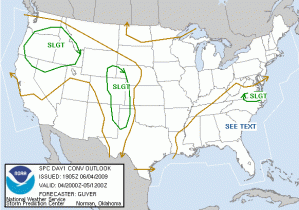On Friday morning, the group got together to discuss June 4 activities and overall thoughts from their week in the HWT.
- want to transition from RPG-only algorithms to including NSE data into any radar algorithms
- If looking at 1 min radar scans…hard to keep tabs on changes in 0-1 km wind shear for example, or any other NSE parameter for that matter. Would like to see an envionmental algorithm paired or integrated into radar algorithms
- The NSE data needs to be reliable and accurate, otherwise it would be detrimental
PUB/BOU/CYS IOP:
- Near end of IOP a storm moved right over the KCYS radar, MESH did it’s job using multiple radars to fill in the cone of silence. However, MESH seemed to be overestimating compared to the reports that SHAVE were getting (1.00 inch vs. 1.7-1.9 inches)
- MESH tracks showed where storm had been going and was consistent, allowing the warning polygon to be oriented the right way
MR/MS Discussion
- MR/MS doesn’t account for refraction properties yet, though a QC check does eliminate much of the AP
- Mid-level rotation tracks were useful to help find a consistent track of the rotational signatures. They also help confirm you have a supercell when the tracks are consistent
- Like examining the trends in -20C reflectivity
- Lots of the gridded products are redundant, containing the same type of information. Have to be careful not to get tunnel vision when using all these gridded products. Redundancy also helps you transistion from products you are use to using to the new products and grow expertise and confidence.
- Be comfortable with the gridded products in order to properly integrate them into the warning decision process
- Plan view plot of scan-to-scan change would be useful…like change in MESH from scan-to-scan. They all thought that trends were every bit as important as the max values reported.
- Google map displays: really want those in their local offices
LMA
- impressive, never used the data before but very useful in areas were radar data may be lacking
- need research to see if LMA data vs. cloud to ground data in the early stages of storm formation means anything
- LMA is an average, then AWIPS smooths it further, thus losing information
- They like the high res appearence, how it is similar to radar reflectivity.
- Using it to help forecast when a storm first becomes severe, at the very least use it to get some led time on rapid intensification
- #1 killer in FL is lightning…Pete hopes that there is a focus on provided an improvment on service for lightning threat
CASA
- Need low-level altitude resolution that CASA provides. This is crucial information the 88D can’t always provide. This is a “big positive”
- A consideration with CASA is that it provides rapid scan updates that could give a few extra minutes of lead time, but won’t be more than a few minutes. Selling point will not be verification scores but the one devastating tornado you catch that formed well below the 88D’s lowest scan
- Will see lots of signatures on CASA that haven’t been seen before and don’t currently know how to interpret. Will be steep learning curve for these new/different signatures
- Used reflectivity quite a bit to infer presence of a tornado becuase with the high resolution in time and space they were able to see the “do-nut” signature common with tornadoes
- Will see a lot more low-level rotational signatures, do you warn on every little 30 sec dust whirl that shows up on CASA that you would never see with the 88D? Obviously if each one is an actual tornado then yes, but gray area if they are very short lived and weak. Could see a lot more warnings come out.
- 1 min data might be more tempting to hold off on a warning, waiting one more scan, then waiting one more scan. Can ride the fence on warn/don’t warn a little longer. Not sure if this might be a real impact, will need to do some research on this, maybe on the WES.
- Big learning curve and training will be needed to grow accustomed to 1 min updates
PAR
- Provided more rapid updates but didn’t have any other advantages, since resolution is about the same if not worse at the edges of the scan sector, and also the same elevation angles.
- Pete will take PAR data capabilities back to JAX with lots of excitement because it helps with the low-topped, weak signature supercells in tropical environments. PAR allows for detection and tracking of rapidly evolving weakconvergent and rotational signatures. PAR should also help with pulse-type storms because of rapid evolution, getting early detection of cores aloft that the 88D might miss.
Liz Quoetone and Paul Schlatter (EWP Weekly Coordinators, 1-5 June 2009)

